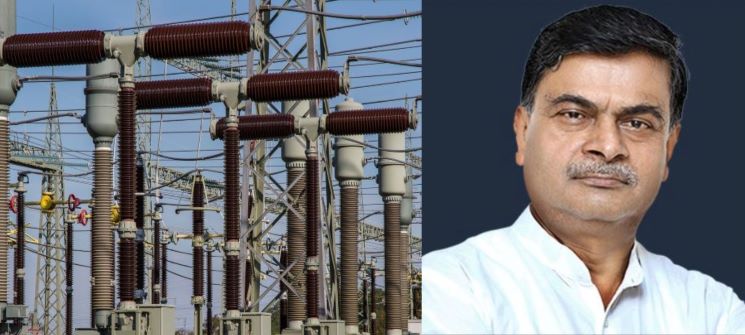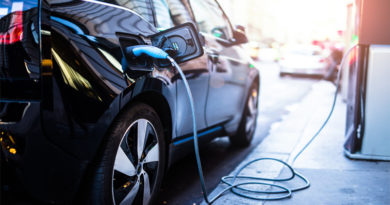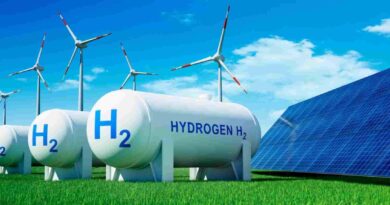Shifting Goalposts, And The New Reality of India’s 175 GW Renewable Target for 2022
 Troubles At Thermal
Troubles At Thermal
Over the last few months, Mr. R.K Singh, the Minister of State (Independent Charge) of the Ministry of Power, Minister of State (Independent Charge) of the Ministry of New and Renewable Energy and Minister of State in the Ministry of Skill Development and Entrepreneurship, Government of India, has faced what must seem like a tiring question to him. He has been asked about the impact on India’s ambitious renewable energy targets for 2022, be it from the safeguard duty issues in 2018, issues linked to the GST disruption in 2017, or the plain cussedness of India’s famous bureaucracy, besides the vindictiveness of a key state government and payment delays by discoms. These are issues that have tangled up many renewable energy projects and firms too. Through it all, Mr Singh has remained steadfast in his message. The 175 GW target will be met, and met in time. The only ‘concession’ during this time that the MNRE has clarified on is that 2022 means December 2022.
So why the skepticism around the number? Why have industry analysts practically moved on to the period beyond 2022 already? It is important to close this issue formally. This is important, purely from the perspective of the solar and wind energy sectors, the two sectors that offer the highest potential, and have the most to lose in the new scheme of things.
Lets’ start with the original 175 GW target. The good news is, the target was always considered an ambitious ‘stretch’ target, seen more as a government challenging itself and industry to get there. Incredibly, when Prime Minister Modi first announced the target back in 2015, even he may not have imagined how quickly things would change on the ground to make this a real possibility, for a while at least. From a drop in equipment and material prices, to a strong global and private sector interest, it all came together to enable the country’s solar and wind sector actually dream about getting close. Till a combination of all of the challenges highlighted above laid them low. So why is the minister adamant that the 175 GW number will be met? Large Hydro. The original target was broken down by the MNRe itself as made of 100 GW Solar (with 40 GW of rooftop solar within that), 60 GW of wind energy, 10 GW of bio mass powered RE, and finally, small hydro, which was Hydro under 5 MW of capacity. Large hydro changes the picture completely.
Sometime in 2019 , India quietly followed the rest of the world and started counting large hydro too, in the new number crunching. Something analysts and other industry watchers, especially in the solar and wind energy sectors are loathe to do yet. While large Hydro was ostensibly added to support the sale of the power from some of the larger plants plants, by making their power sales eligible under the Renewable Energy Purchase Obligation (RPO) of discoms, thankfully a separate category for solar has also been created. This has added the heft of a power source with close to 45 GW of existing capacity to the mix, with a further 15 GW under construction. And thereby hangs the tale.
The Hydro addition makes the achievement of the 175 GW target almost a certainty. In Solar , 34 GW is already up and running, with a further 24 GW in the pipeline(under construction or beyond PPA signing stage), with a possible 24 GW likely to be bid out by 2022. With wind expected to end up at around 45 GW by 2022 end, that means Solar will end up at just around 60 GW, a number that is eminently doable. While covering up for the massive expected failure of rooftop solar, which had a share of 40 GW out of 100 GW, and is likely to end up at under 10 GW now.
So who takes the hit here? It is obvious that Wind Energy, which has truly struggled for the past two years, has been hit. Solar, which has received a lot of support, especially in the past 12 months after slipping off the growth horse from 2018 onwards, still has enough momentum behind it. That might even explain the delay in the widely expected announcement of basic customs duties on solar imports from China, as the ministry grapples with the impact it could have on projects in the pipeline, and the final cost of solar power in the future. After all, the lower prices are the biggest reason why utility solar eventually made its own case and attracted investments.
Many environmentalists will tell you that the biggest hit has been taken by the environment and ecology of many areas where the country remains bent on making large hydro projects, despite a very questionable record if Hydro costs and success. But that’s a separate story altogether.
Like any excellent salesman selling a rosy future over a troubled present, the government has already started talking about the target for 2030, an even more daring 450 GW, this time in the hope that domestic manufacturing will rise to the occasion by 2022-23 to make the next part of the journey more acceptable. With the buffer of large hydro factored in, there was a time last year when even 225 GW was spoken of as the 2022 target, but that has tailed off after the sharp drop in both solar and wind additions.
In any case, the 2030 target certainly looks doable, if we follow the same tactics as those fir 2022. There is a solid 63 GW of carbon free nuclear capacity that is targeted by then.




